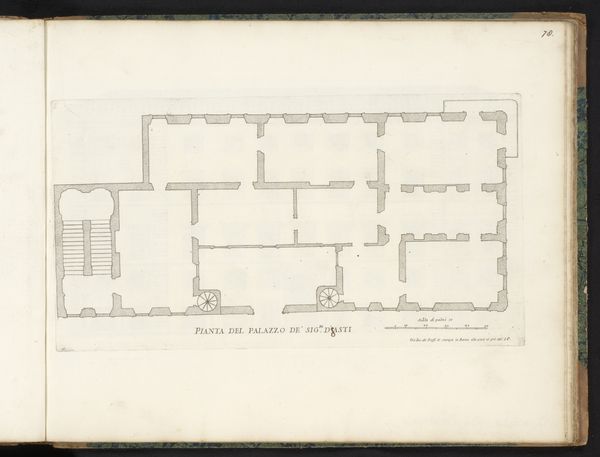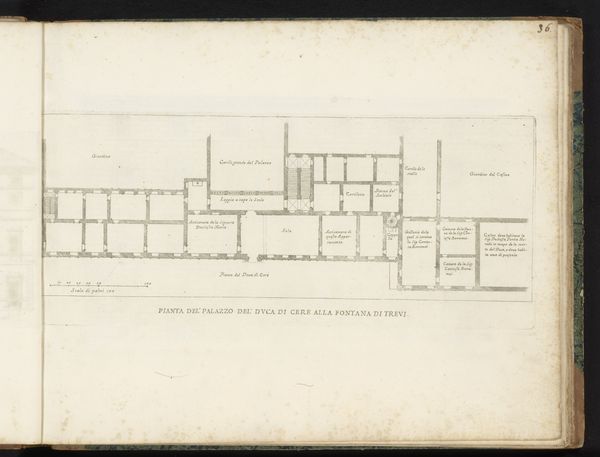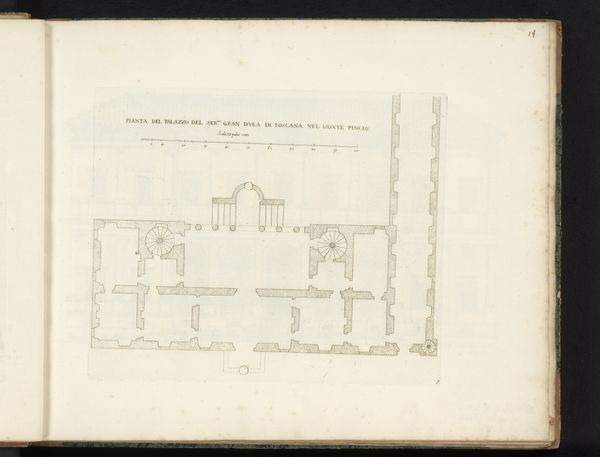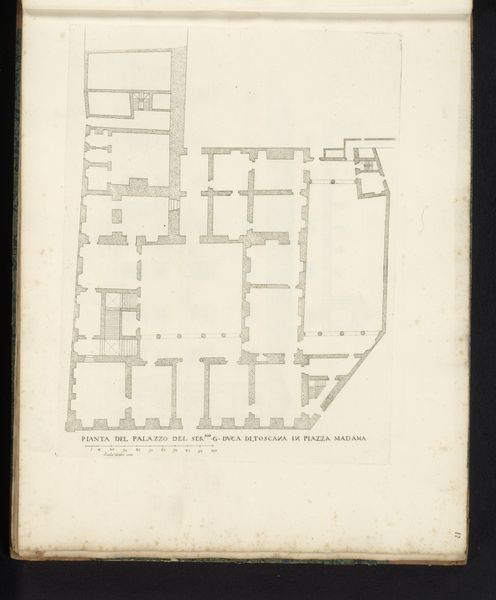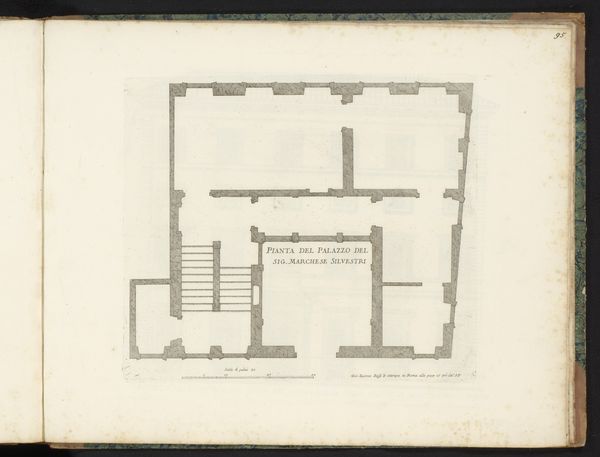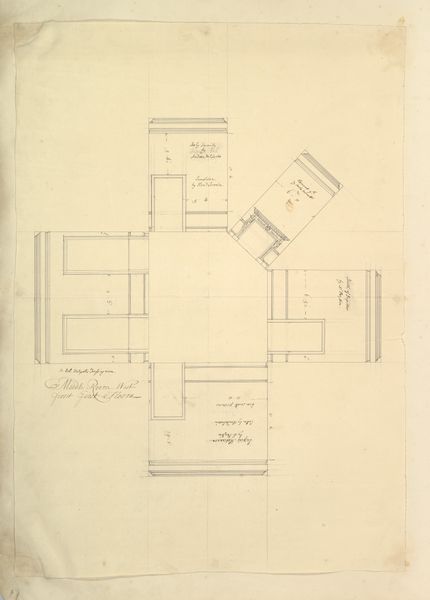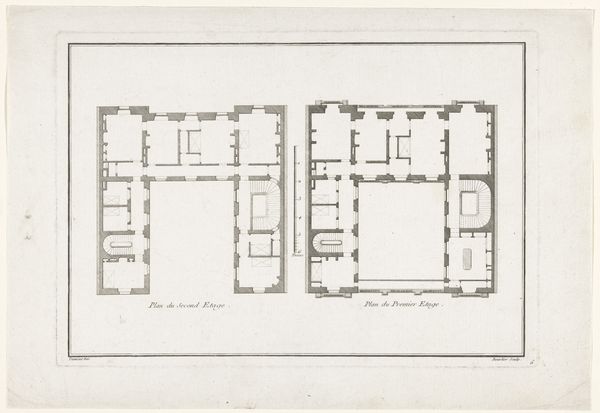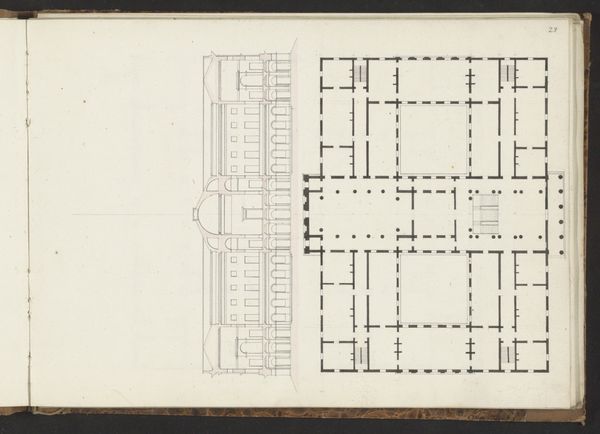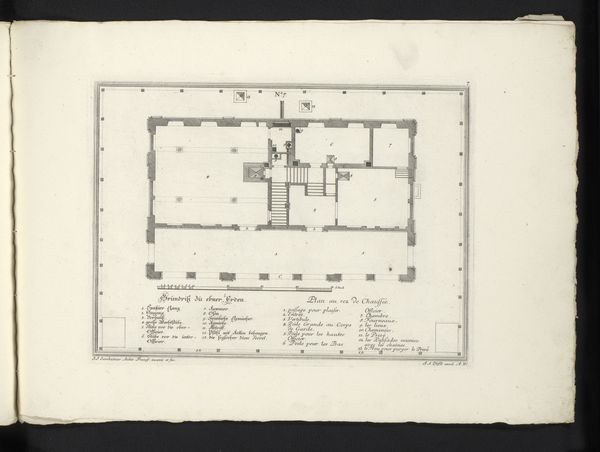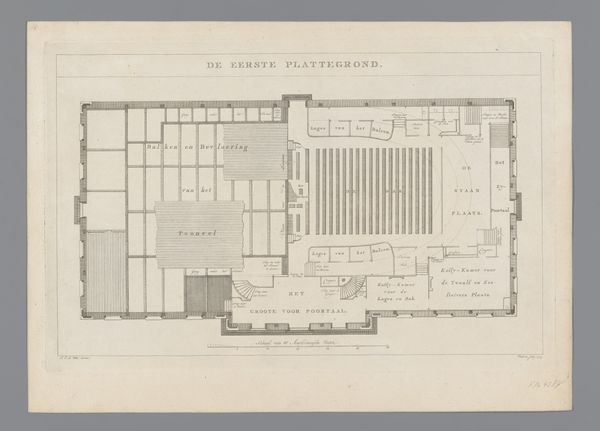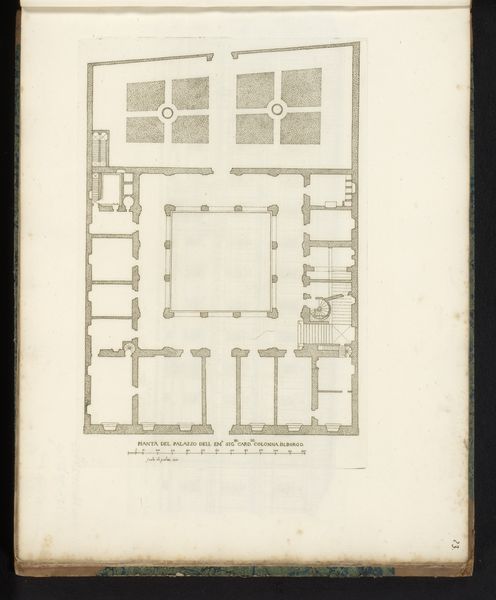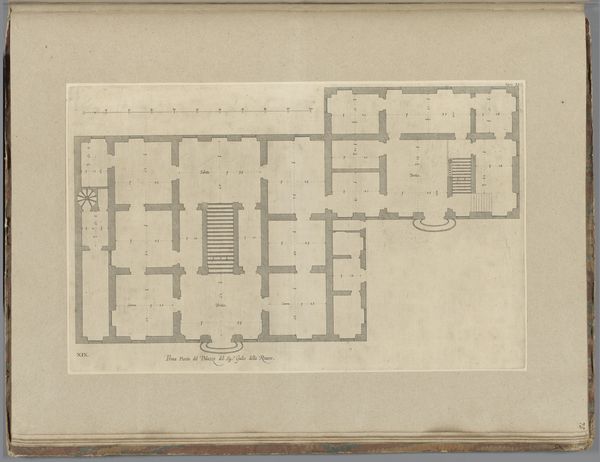
drawing, print, etching, architecture
#
drawing
#
aged paper
#
toned paper
#
hand written
#
homemade paper
#
baroque
#
ink paper printed
#
parchment
# print
#
etching
#
hand drawn type
#
tea stained
#
hand-written
#
cityscape
#
architecture
Dimensions: height 254 mm, width 420 mm
Copyright: Rijks Museum: Open Domain
Curator: Here we have Giovanni Battista Falda's "Plattegrond van Palazzo del Quirinale," made after 1655, a detailed architectural print showcasing the Quirinal Palace. Editor: It looks like something a meticulous architect might doodle during a very important but dull meeting – all straight lines and right angles, captured on lovely tea-stained paper. Is it parchment, perhaps? Curator: Actually, it's ink and etching on paper, embodying the Baroque era's aesthetic of grandeur through detailed cityscapes and architectural drawings. Editor: It definitely exudes order, doesn't it? Almost intimidatingly so. I imagine the popes who resided there must have felt watched by those perfectly aligned corridors and chambers. Curator: It served as a papal residence, reflecting the church's power, but it was also about urban planning. Prints like this circulated ideas, standardizing aspects of palace designs and even influencing statecraft. The scale suggests immense planning went into every room and hall. Editor: All I see are potential hiding places during political intrigues. Think of the stories those walls could tell, if only architectural plans came with annotations beyond "throne room" and "ballroom"! Curator: Architectural prints allowed broader audiences to imagine and understand the structures inhabited by their leaders and explore its impact on social life and power dynamics. Editor: But to render such a significant space with so few human elements! Is that the nature of this particular format? What if Falda had peopled the corridors, like tiny Sims, acting out dramas of the era? Curator: Adding human figures would dramatically shift the focus; rather, this gives us access to an understanding of spatial control, access, and proportion and scale. Editor: Still, I find myself yearning for just a touch of the human to remind me that these elaborate rooms weren’t just lines on paper, but were places to forge empires. Curator: It reminds us to delve beneath the surface, questioning what these depictions omit and what narratives of authority they implicitly perpetuate. Editor: Exactly! Perhaps my Sims vision wasn’t so far off—after all, history comes alive through storytelling, both imagined and recorded.
Comments
No comments
Be the first to comment and join the conversation on the ultimate creative platform.
